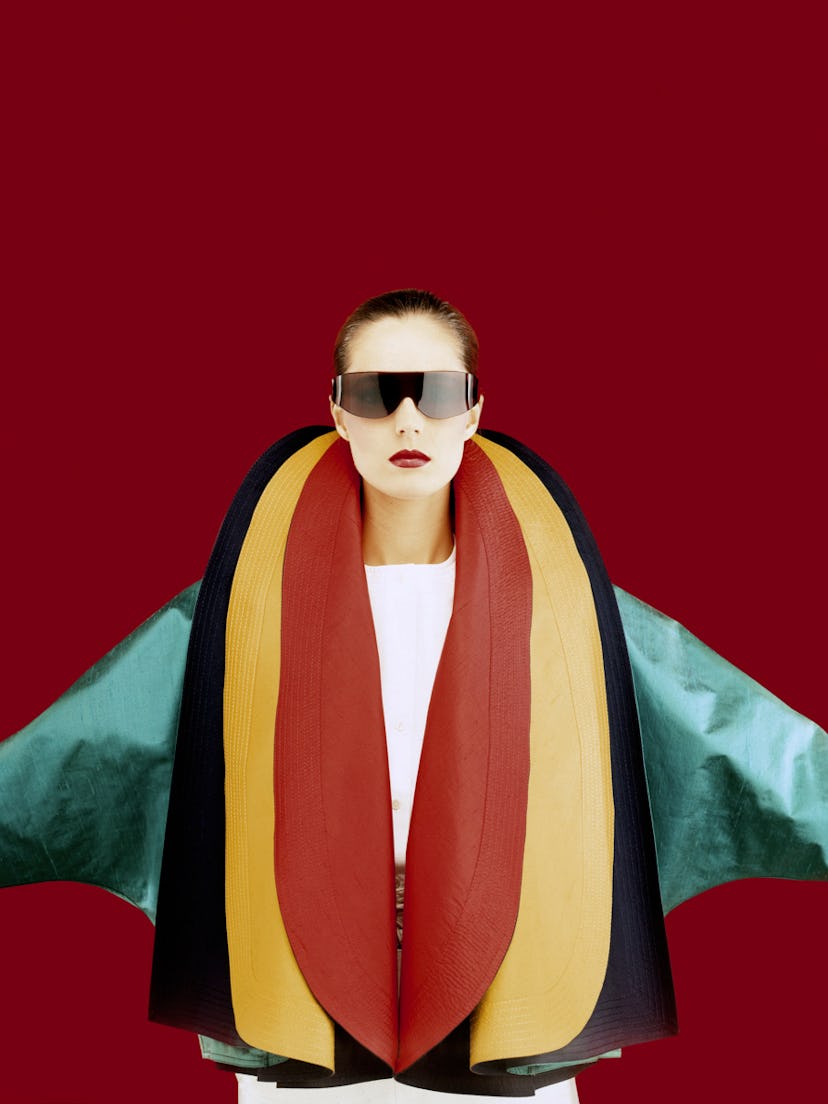A Milan Fashion Week Exhibit Argues That the Trends You Care About Today Started In Italy Decades Ago

It’s strange to think of fashion having an image problem—the industry is, after all, built around the idea of image—but in Italy that apparent oxymoron is currently a reality. “Somehow, we fell into this situation of not having enough investment by the government, so there is no great fashion school to train designers, nor a fashion museum, nor even a commitment to staging thoughtful fashion exhibitions,” says Maria Luisa Frisa, a critic and professor of fashion history at Università Iuav di Venezia. “As a result, Italian fashion has lately been judged harshly by the rest of the world. Italy has come to be seen as a great place for production, not for creativity.” And so, along with W’s editor in chief, Stefano Tonchi, she’s setting out to remind us of la moda’s inherent magic. Their new show, “Italiana: Narrating Italian History Through Fashion, 1971–2001”—which opens at the Palazzo Reale on Thursday, at the beginning of Milan Fashion Week—looks back at a time when Italy dominated the world of style, gifting the universe with such cultural touchstones as the Armani suit, the first It bag (in the form of the Fendi Baguette), and, contends Frisa, the very idea of men’s wear. The concept of “uomo moda—a man who uses fashion to shape his look and his aesthetic identity—is,” she says, “really an Italian invention.”
Aldo Fallai’s take on Giorgio Armani business attire, L’Uomo Vogue, February 1980.
Rather than rely on chronology, the show is organized according to themes, with each room exploring an idea that galvanized Italian society—and was reflected in its fashion—at a particular moment. One area of focus is gender identity, which, according to Tonchi, Italian designers were the first to truly redefine on a mass scale. “They gave women a wardrobe for the working environment and also understood the man who was looking for a different way to express his masculinity,” he says. Through nearly 120 looks—as well as artworks, design objects, and photographs—the show also delves into the concepts of exoticism (think Roberto Cavalli’s over-the-top jungle-cat prints), industrial design (as exemplified by an LED-powered Cinzia Ruggeri dress meant to light up upon encountering “someone interesting”), postmodernism (such as Prada’s reinterpretation of 1950s silhouettes in 1990s technical fabrics), and logo mania (after all, before there was head-to-toe lv there was g upon g upon g).
Paolo Roversi captures a Versace dress, Vogue Italia, March 1998.
The chosen start point, 1971, speaks to another of the show’s themes: the democratization of fashion. That year, the Italian shows were relocated from the regal atmosphere of the Palazzo Pitti, in Florence, to the industrial hub of Milan. “Moving the shows meant shifting the focus away from fashion for the elites,” Frisa says. “It was the beginning of the Italian prêt-à-porter.” And ready-to-wear, points out Tonchi, soon gave way to another innovation of Italian fashion: the notion of “lifestyle” as summed up by things like Gucci-branded ski goggles, Versace china, Bulgari hotels, and Armani restaurants.
Three decades later, in 2001, there was another shift, when the 9/11 attacks, in Frisa’s words, “altered the global equilibrium” just as the introduction of the euro was shaking up the way the Italian fashion system interacted economically with the rest of the world. The combination, she says, was “sort of an earthquake” for the industry.
Happily, things are looking up. “I think the new generation of creative people is increasingly aware of what it means to work in Italy, and what the benefits are,” Frisa says, pointing to the country’s impeccable production standards and abundance of brands that combine rich history with an openness to new ideas. As a result, she adds, “it’s an exceptional moment not only to make fashion in Italy but also to observe it.”
His-and-hers looks shot by Oliviero Toscani, L’Uomo Vogue, December/January 1971–72.